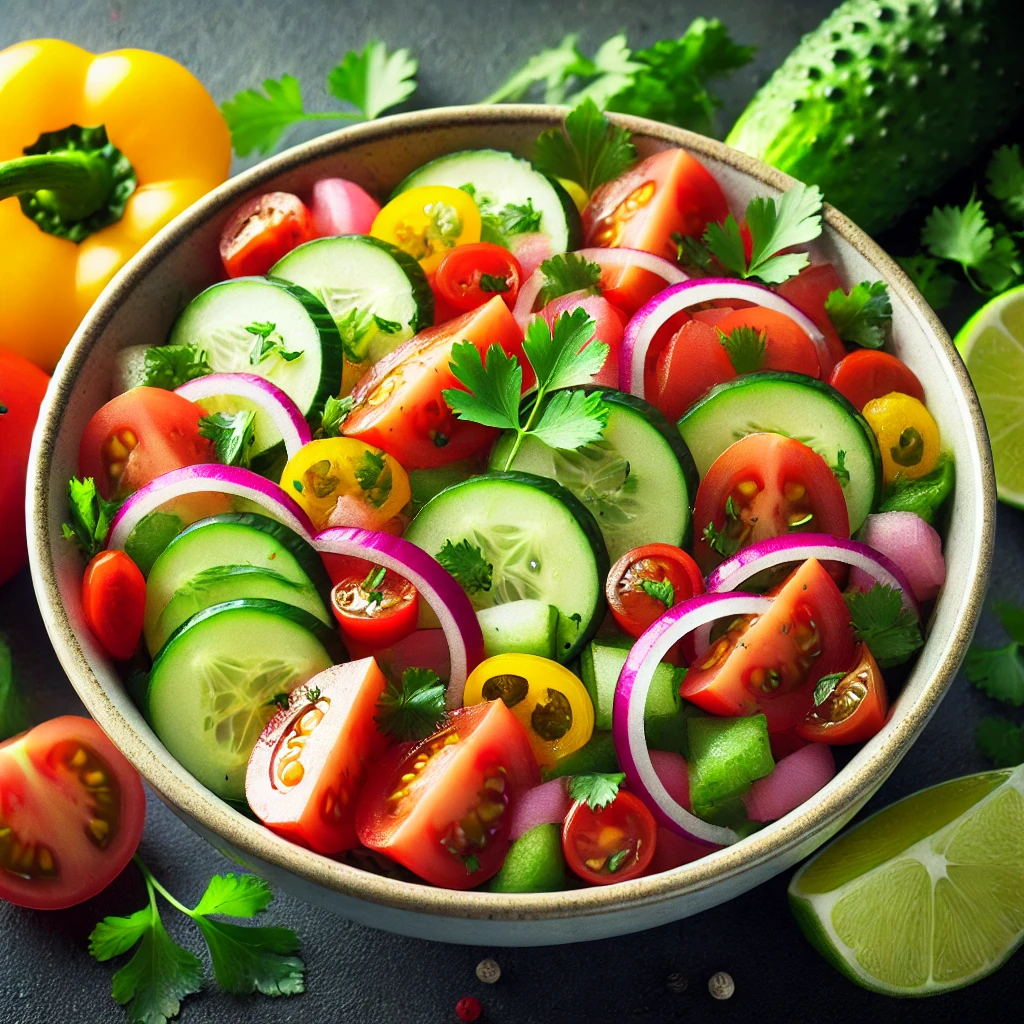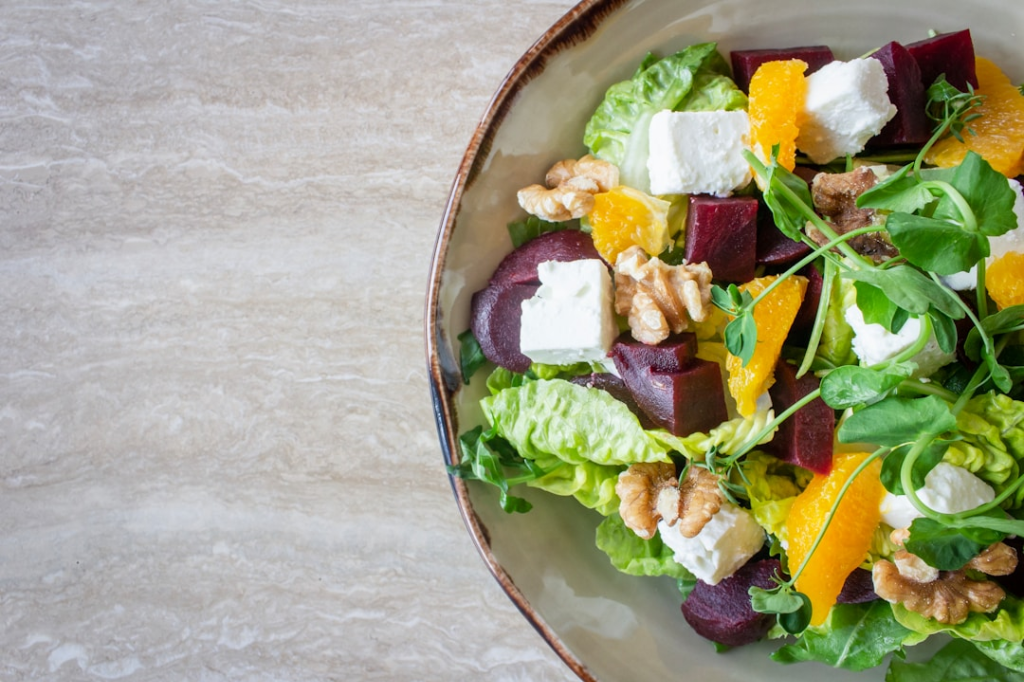Both bruschetta and salsa are appetizers with distinctive tastes when it comes time to choose. For those trying to choose better, however, knowing the nutritional value and components of every food is crucial. By contrasting their contents, calorie count, and general health effects, we will dissect the health advantages and possible drawbacks of both bruschetta and salsa in this blog article so you may decide with knowledge.
Overview of Bruschetta and Salsa
Toasted or grilled bread, garlic, fresh basil, olive oil—all of which are typical Italian appetizers—makes up bruschetta. Though the taste is the same—fresh, light, and delicious—a bruschetta meal can call for mozzarella or balsamic vinegar.
Diced tomatoes, onions, cilantro, lime juice, and seasonings make up the classic Mexican condiment salsa. It looks like Pico de gallo, a kind of raw salsa; other variants include roasted and pureed forms.
Although they include fresh herbs and vegetables in both recipes, their look, nutritional value, and general components vary somewhat significantly.
Nutritional Breakdown: Bruschetta

Starting with the nutrients of bruschetta, let’s The basic elements are:
- Tomatoes: Along with vitamins A and C, tomatoes have lycopene, an antioxidant linked to lower cancer risk and better heart health.
- Garlics: Garlic’s anti-inflammatory and heart-healthy components have long been well-known.
- Olive Oil: Rich in good monounsaturated fats, olive oil enhances heart function and might help reduce cholesterol.
- Bread: Most bruschetta recipes call for either white or whole-grain bread, so calories and carbs are included.
Nutritional Considerations:
Though the tomato topping is rich in healthful components, the bread adds a lot of calories. One slice of bruschetta has somewhere between 70 and 120 calories depending on the toppings and quantity. Olive oil is still a calorie increase even with its health advantages—roughly 40 calories per teaspoon. Bruschetta’s bread foundation high in carbohydrates might undermine your attempts at weight reduction.
On the other hand, the monounsaturated fats in olive oil in bruschetta are good for heart health and could even help to reduce dangerous cholesterol levels.
Calories per Serving: A standard serving of two pieces of bruschetta can range from 150 to 300 calories.
Nutritional Breakdown: Salsa

Salsa is far lighter and typically lower in calories. Its main ingredients are:
- Tomatoes:: Like bruschetta, salsa is high in lycopene and offers a fair supply of vitamin A and C
- Onions: Packed with anti-inflammatory and heart disease-fighting chemicals, onions are a fantastic complement to any diet.
- Cilantro: While adding flavor, cilantro is rich in vitamins and can aid digestion.
- Peppers (Chili, Bell, etc.): Different kinds of peppers bell, chili, etc.; spicy ones Particularly chili peppers, chilies contain capsaicin, a substance with anti-inflammatory and metabolic boosting effects.
Nutritional Considerations:
With just around 15 to 25 in a serving, salsa naturally has low calories. Since salsa lacks bread, it’s a better substitute for bruschetta in a healthy sense. Moreover, salsa is a perfect alternative for everyone limiting their calorie count as it lacks any extra fats.
Still, tortilla chips are a popular garnish for salsa and rapidly pile calories onto a meal. Use fried tortilla chips instead of whole-grain crackers or salsa produced from fresh veggies to make a better decision.
Calories per Serving: A serving of salsa contains around 20 calories, with no significant amount of fat or carbohydrates.
Health Benefits: Bruschetta vs. Salsa
Mostly because of their fresh components, both salsa and bruschetta offer special health advantages:
Health Benefits of Bruschetta:
- Heart Health: Monounsaturated fats abound in olive oil used in bruschetta, which helps decrease bad cholesterol (LDL) and boost good cholesterol (HDL). Heart disease risk may be lowered by this.
- Antioxidants: Tomatoes and garlic are abundant in antioxidants, which may help lower risk of chronic illnesses and inflammation.
- Digestive Health: Tomatoes and whole grain bread (if utilized) help digestive health by virtue of their fibers.
Health Benefits of Salsa:
- Low-Calorie: Salsa is a great option for those trying to keep a good weight or reduce weight as it has quite few calories.
- Boosts Metabolism: Chili peppers’ capsaicin may assist burn calories and momentarily increase metabolism.
- Immune Support: Salsa is high in vitamin C, which boosts immune system function and fights infections.
Which One is Healthier?
Regarding calories and fat count, salsa is absolutely the best choice—especially if consumed by itself without chips or other high-calorie sides. Because of its low calorie count and the antioxidants and vitamins it includes, salsa is a wonderful choice for anyone limiting their calorie balance who still wants a delicious appetizer or side dish.
Still, bruschetta could be a decent choice as well, especially if eaten modestly and with olive oil that is heart-healthy. The main downside is bread as it raises calories and carbohydrates. Replace bread in a healthy bruschetta to save calories by substituting roasted vegetables, whole grains, or cucumber slices.
Healthy Modifications
Here are some tweaks you may do to enjoy both bruschetta and salsa while being health-conscious:
- For Bruschetta: Choose whole-grain bread or replace the bread altogether for a lower-calorie substitute like roasted veggies or zucchini slices. This will lower the carbs and maintain the dish’s nutrient-density.
- For Salsa: To keep your salsa low in calories, pair it with better dippers as baked tortilla chips, bell peppers, or sliced cucumbers. For an added dose of vitamins and taste, you may also create salsa using less salt and use more fresh items like avocados or mangoes.
Final Verdict: Salsa Takes the Lead
Although both bruschetta and salsa have health advantages, salsa comes out as the better choice with its low-calorie, nutrient-dense character. For those trying to control their calorie count but still want a wonderful and adaptable meal, this is a fantastic option. Though more calories, bruschetta is a fantastic option when you want something somewhat more full because it offers heart-healthy lipids and antioxidants.
Conclusion
Both bruschetta and salsa fit a balanced diet regardless of your taste. For someone trying to cut down on calories and fat, salsa is perfect; bruschetta provides extra heart-healthy fats and a filling snack. Easy changes will let you enjoy both foods without sacrificing your health objectives. Whichever your taste, both are delicious, healthy, and ideal for any occasion!
FAQ’s
Is salsa healthier than bruschetta?
Yes, salsa is generally healthier than bruschetta due to its low-calorie count, lack of bread, and nutrient-rich ingredients like tomatoes, onions, and cilantro. It’s ideal for those watching their calorie intake.
Can I make bruschetta healthier?
Absolutely! Use whole-grain bread or substitute bread with roasted vegetables or cucumber slices. Limiting the use of olive oil and incorporating more vegetables in the topping also makes bruschetta healthier.
What are the calorie differences between bruschetta and salsa?
A serving of bruschetta ranges from 150 to 300 calories, mainly due to bread and olive oil. Salsa, on the other hand, is much lighter, with about 15-25 calories per serving, excluding tortilla chips or sides.
What are the health benefits of bruschetta?
Bruschetta provides heart-healthy fats from olive oil, antioxidants from tomatoes and garlic, and digestive benefits if whole-grain bread is used. It’s a good source of vitamins A and C.
What are the best alternatives to tortilla chips for salsa?
For a healthier option, pair salsa with baked tortilla chips, sliced bell peppers, cucumber slices, or whole-grain crackers. These dippers are low in calories and complement salsa’s flavors.


